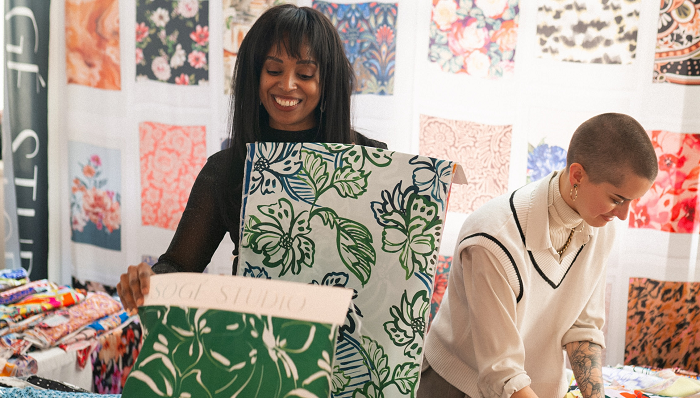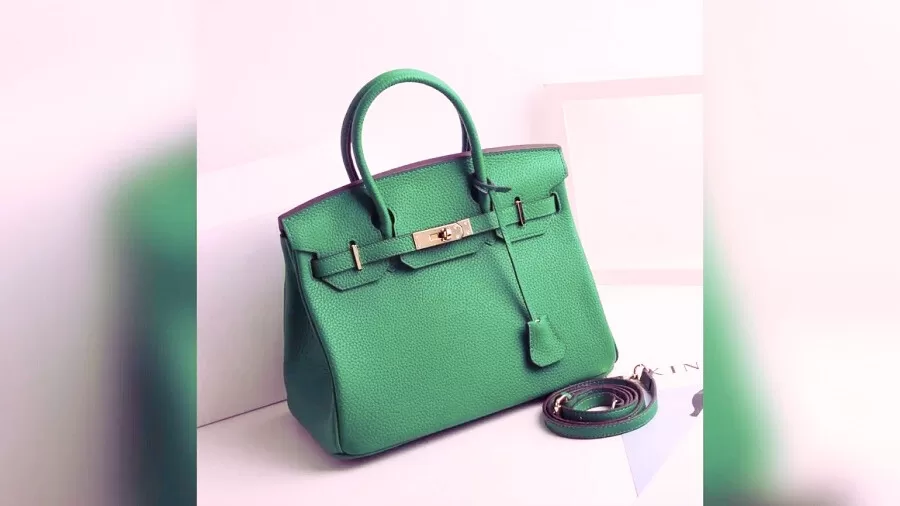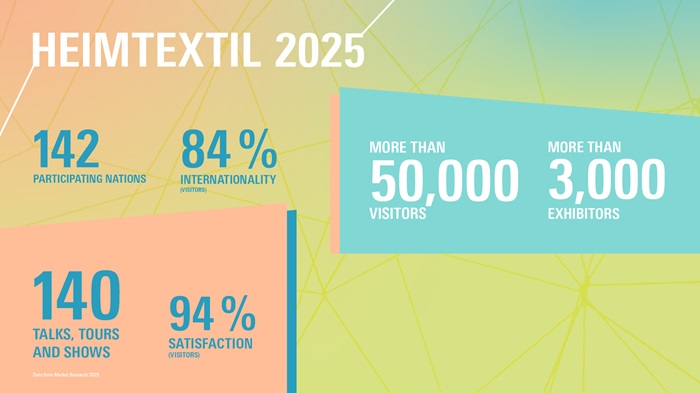FW
In a move, which the company claims to be not politically motivated, Gaps Chairman and CEO, Glenn Murphy has raised the minimum hourly wage rate for stateside employees from $7.25 dollars to $9 dollars in June 2014. This would be further revised to $10 a year later. Recently, the White House had said that the minimum wage for federal contract workers would be raised to $10.10 an hour in 2015. President Obama has applauded the Gap move in a statement, stating a minimum wage increase would lift the incomes of more than 16 million Amherican workers.
According to the company, the increase in hourly wage rate would affect 65,000 employees by 2015. But it also said that not all these workers are currently earning the minimum wage. Murphy believes that the current wage hike is with an aim to strengthen frontline employees to further enhance an in-store experience. Gap employs 1,35,000 employees across 50 countries and currently owns six brands, including Banana Republic, Old Navy, Piperlime, Athleta and Intermix.
On the other hand, Walmart, the largest retailer and private employer in the United States has decided to stay ‘neutral’ on the wage issue since it already pays most full-time employees above 10.10 dollars (Rs 626.9). However, as per the recent report by nonpartisan Congressional Budget Office, increasing wages to 10.10 dollars would result in the loss of 500,000 jobs.
www.walmart.com
Invistas cordura Naturalle fabrics featured among ISPO Textrends Top 10 winners in membranes and outer layer categories at ISPO Munich. Developed as a forum focusing on fabric and accessory trends for the outdoor sports apparel and equipment market, ISPO Textrends Forum has become a global showplace to provide designers and product developers the latest innovations in performance fabric technology.
The lightweight, breathable and waterproof Naturalle fabric selected by the Textrends is a three-layer laminate stretch ripstop. A Hua Mao stretch dobby Naturalle fabric was also recognized as a Top 10 winner in the outer layer category, which showcases lightweight but ultra-resistant woven, stretch, waterproof, windproof and multi-layer fabrics for exceptional protection against the elements.
For Textrends at ISPO Munich 2014, fabrics and accessories were submitted by textile mills and brands for a chance to be included in the top 10 of their respective categories. An assembly of sportswear industry professionals including designers, trend experts and journalists reviewed all the submissions and evaluated each one independently on six different criteria: performance, hand, creativity, innovation, eco-sustainability, and best multi-function.
munich.ispo.com/
The US and Australian cotton industries new Cotton LEADS program is working to recapture market share for cotton against synthetic fibers. Cotton producers may soon be called in to help in that effort with their time and knowledge. The first step in this process was to develop metrics to help support the work US cotton was doing in the area of sustainability. This includes everything from improving land use efficiency to water use efficiency, improving pesticide applications, soil erosion improvement as well as reduced energy use. This was combined with increased efforts in research capabilities, efforts in agricultural research as well as textile product care.
However, this wasn’t enough. Globally, US cotton interests were still encountering resistance. Thinking they needed a partner globally, the US cotton industry led by the National Cotton Council (NCC) and Cotton Incorporated and Cotton Council International (CCI) met with the Australian cotton industry. Their metrics were very similar to US metrics, with improvements in water use and pesticide applications.
The Americans gave the Australians a proposal to jointly promote their cotton in this arena, and called it ‘Cotton LEADS’. The ultimate goal was to have brands and retailers around the world accept US and Australian cotton as part of their sourcing strategies without going for costly certification.
www.cottonleads.org/
DyStar, a leader in both product and application innovation for the textile and leather industries, has released its 2012 sustainability report. It provides an insight into DyStars progress and initiatives in view to sustainability during 2012 following the guidelines of Global Reporting Initiative GRI3.1.
On the basis of the application level criteria, the report has been self-declared as a Level B report, which also includes its performance on the UNGC UN Global Compact Ten Principles, which DyStar endorsed in 2011. Some key points include the company’s reduction of its GHG emissions by approximately 13 per cent which represents a great step towards its internal target of a 20 per cent reduction by 2020. The success of DyStar’s initiatives has affirmed the companys dedication to provide sustainable solutions and products to meet customers needs, while protecting the environment.
According to Charu Jain, DyStar s Global Sustainability Manager the company reduces its impact by being responsible in the use of resources. Also, while delivering the best quality products to its customers, the company assists them in decreasing their own environmental and social footprint through the use of clean, safe and efficient products and best available technology.
www.dystar.com
Jordan Lea has been elected the President of Cotton Council International (CCI) for the year 2014, during the organization’s board meeting held during the National Cotton Council’s (NCC) recent annual meeting. CCI is the export promotions arm of the NCC and carries out programs in more than 50 countries globally under the Cotton USA trademark.
Lea, a merchant with Eastern Trading Company in Greenville, SC, succeeds John Burch, a Bakersfield, CA, cooperative official who is now CCI Board Chairman. Lea is a past Chairman of the American Cotton Shippers Association, and serves on the Board of Directors of the NCC and The International Cotton Association.
Other CCI officers elected during the meeting are: Dahlen Hancock, Ropesville, TX as first Vice President, Keith Lucas, Garner, NC as second Vice President, Anthony Tancredi and Cordova, TN as Treasurer. Mark Lange of Cordova, TN, was re-elected as Secretary, and Kevin Latner of Washington, DC, was elected as Assistant Secretary. E. Hope (Hopie) Brooks, III, Cordova, TN; James Massey, Harlingen, TX; and Cannon Michael, Los Banos, CA, were newly elected as CCI directors for 2014.
www.cottonusa.org
Wallace Darneille, a Lubbock, TX, cooperative marketer, was elected as the Chairman of National Cotton Council for 2014 during the National Cotton Council’s (NCC) annual meeting held in Washington. Darneille, President and CEO of Plains Cotton Cooperative Association, succeeds Jimmy Dodson, a Robstown, TX, cotton producer as Chairman.
Darneille has a long record of outstanding service to the NCC and to the US and global cotton industries. This past year, he served as NCC Vice Chairman and was the Chairman of Cotton Council International (CCI) in 2011, after serving as its President in 2010. He also served as Chairman of the National Council of Textile Organizations in 2009-2010, and was President of the Liverpool, England-based International Cotton Association in 2007.
Previously, he was President of the Texas Cotton Association, as a member of the Executive Committee of the National Council of Farmer Cooperatives, and as a board member of CCI, the American Cotton Shippers Association, the Texas Agricultural Coop Council, Telmark, Denimatrix and The Seam.
Other office bearers elected to serve the NCC in the coming year include: Sledge Taylor, Como, MS as Vice Chairman, Clyde Sharp, Roll, AZ as Secretary-Treasurer, Joe Nicosia, Cordova, TN as Vice President, Coalter Paxton, III, Wilson, NC as Vice President (Warehousers), Meredith Allen, Greenwood, MS as Vice President (Cooperatives), Sid Brough, Edroy, TX as Vice President (Ginners), John Fricke, Pine Bluff, AR as Vice President (Cottonseed) and Anderson Warlick, Gastonia, NC as Vice President (Textile Manufacturers).
www.cotton.org
About 100 Indian companies are expected to exhibit their products at ITMA Asia and CITME 2014, one of the largest textile machinery expos to be held in Shanghai, China from June 16 to 20, 2014. The event would host over 1,500 exhibitors from 26 countries. The exhibition would be spread over 1.5 lakh sq. mt. in 13 halls and is expected to attract over 1.1 lakh visitors. Machinery related to spinning, non-woven, weaving, knitting, printing and dyeing and other segments of the textile value chain would be exhibited.
This year, printing is one of the focus areas. With labor costs going up, textile units require automated solutions and this would be highlighted at the exhibition. The participation from India this year would be 50 per cent higher compared to previous editions held in China in 2012. About 3,000 Indian visitors are expected at the expo. ITMA organised road shows in eight Indian cities to create awareness about the exhibition.
Since 2008, the combined show known as ITMA Asia and CITME has been held in China every two years. The event features the unique strengths of the ITMA brand and China’s most important textile event, CITME.
www.itmaasia.com/
Bangladesh’s apparel industry is set to overhaul itself with modern machinery and tools, which garment makers believe will make their products cost-effective and enhance their ability to compete in the global market. For one, they are investing in machinery from Germany which will minimise production cost, upgrade quality and reduce waste. Factory owners say these machinery can produce apparels quickly with comparatively smaller number of workers.
Scarcity of skilled sewing operators for making high-end garments is a reason behind installing of such expensive machinery. Buyers are pushing factory owners to install modern equipment to ensure timely shipment and better quality of readymade garments. Buyers are often more flexible while negotiating if they find latest machinery in a factory.
No wonder, garment makers, mostly second-generation entrepreneurs, are replacing existing equipment with the latest hi-tech machines. Soon, these equipments are expected to replace all traditional ones. Meanwhile garment machinery manufacturers are also happy with the sudden surge in demand. However, though modern equipment is helping exporters, the high cost involved is a major detractor for quick installation.
Boeing supplier Toray Industries is planning to invest $1 billion and hire 500 employees over the next 10 years at a brand new 400 acre carbon fiber manufacturing facility in South Carolina, US. Toray is based in Japan. It is one of the world's largest producers of carbon fiber and the South Carolina plant will make high-performance carbon fiber for the aerospace industry.
The aerospace industry is growing in South Carolina. The state has more than 200 aerospace companies. Toray will also receive tax breaks that would kick in after the state certifies the company has met its jobs and investment targets.
Toray Industries sees South Carolina as an ideal location for its next North American manufacturing facility since it will have proximity to major customers, both in the US and in Latin American markets. Toray views the United States as a key expansion market for the company due to the revival in manufacturing that is pushing demand for advanced materials, particularly those used in the aerospace and energy-related industries.
Toray Industries manufactures and sells fibers, textiles, plastics, chemicals, IT-related products, carbon fiber composite materials, environment and engineering products and systems, and life science products worldwide.
www.toray.com/
Kenya is luring global textile firms to invest and set up manufacturing units in the country. It has started off by setting up three special economic zones that would offer tax breaks. The country has a diversified economy, and is popular with tourists, but exports are dominated by farm commodities with volatile prices and low returns. Building up industry is vital for Kenya to plug a persistently wide current account deficit, projected to stand at 8.4 per cent of gross domestic product by June.
The special zones would be located near ports and offer incentives such as land for lease and tax breaks that include duty-free imports and waivers on VAT. The aim is to attract western companies who would otherwise go to Myanmar, Vietnam or China. The zones are designed to create 10 million jobs in the next 30 years. Once running, the zones would allow companies to cut down on red tape. Businesses have long complained about bureaucratic hurdles.
<br/>Kenya may also find itself battling regional rivals like Ethiopia, one of sub-Saharan Africa’s fastest-growing economies, which is also setting up new industrial zones and has attracted interest from global fashion retailers such as Hennes & Mauritz.
Kenya is the main trade gateway to east Africa. Africa is becoming the future market for many companies worldwide.











